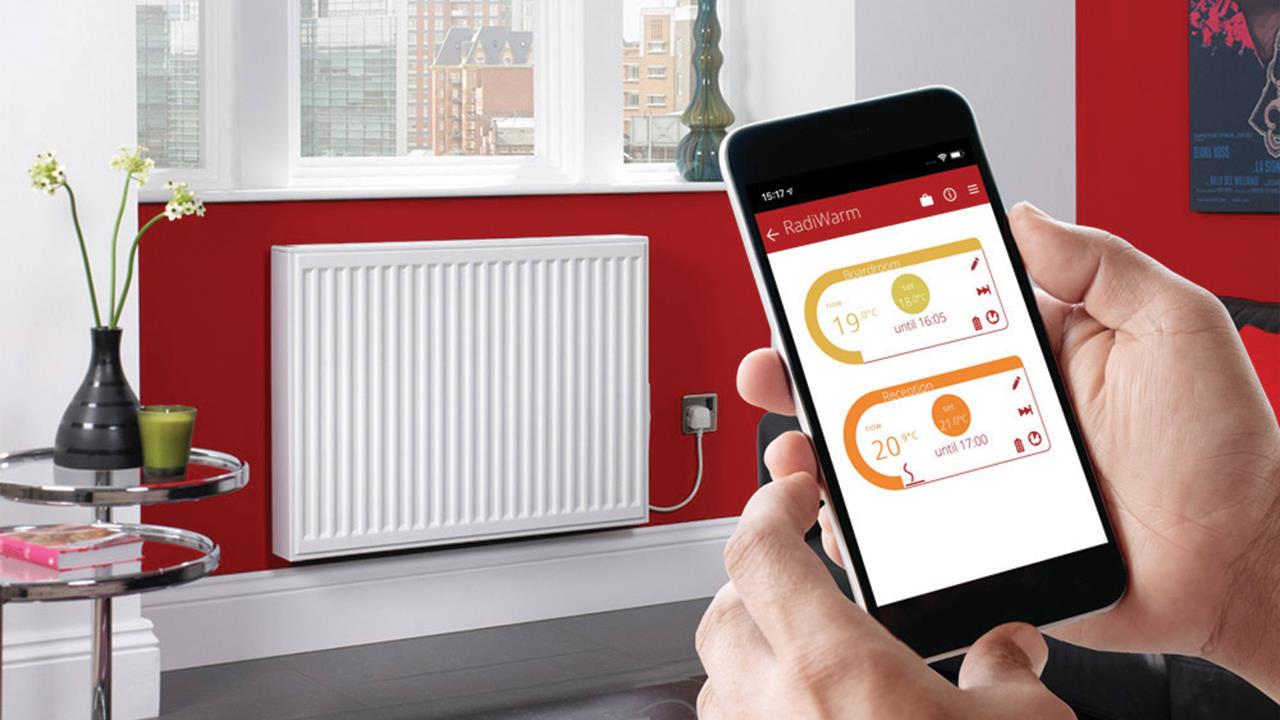

Modern pipeless electric radiators, usually water or silica sand-filled, are becoming hugely popular as a main heat source in domestic, commercial, and public sector buildings.
The heating industry is already familiar with their smart software and energy efficiency, but now building owners and residents are telling us how pleased they are with the comfortable, radiated heat, similar to the ‘wet’ systems they are used to.
Compliant
Their growing popularity is partly explained by recent and upcoming regulations. A vital one is that no gas-fired heating installations will be permitted in new buildings from 2025, and another is the new LOT 20 regulations, in force since January 2018.
LOT 20 requires any new space heating appliances to be compliant with set energy efficiency standards, incorporating intelligent controls rather than simple on/off settings. Such self-regulatory heating has a positive impact on heating bills because no heat is wasted. Controllers with an ‘adaptive start function’, often using an existing Wi-Fi system, will turn radiators on 20 or 30 minutes before the time at which the heating should reach the pre-set temperature.
Using smart software, the radiators maintain that temperature throughout the heating programme, using the least possible energy to heat the space.
Pipeless ranges are offered in a variety of sizes including new upright ones for tight spaces. And, being electric, they are more sustainable than gas or oil.
Easy installation
For installers, pipeless radiators are simple plug-and-play appliances; another reason for their popularity.
For example, RadiWarm’s water-filled Signature range arrives fully sealed, containing an internal patented miniature boiler, pump, thermostat, and software. They can be installed in a matter of minutes as all that needs to be done is to mount them on a wall bracket and plug them into a standard electric socket.
Controllable
Pipeless radiators often have best-in-class control and heating management functions. Some radiators can be controlled remotely over the internet through a smartphone or tablet app.
Using a gateway that plugs into a standard home Wi-Fi router, the radiators can be managed individually or grouped into zones. A different schedule can be set for each day of the week, if needed, with up to three programmes a day.
If there is a ‘not heating-up alert’ function, a notification will flash on the screen when, say, a window or door is left open. Additionally, some of the apps on the market, like RadiWarm’s Smart Controller, display charts and graphs to show energy consumption over time.
However, not every building needs remote heating control. A more affordable option is a system based on a wireless, feature-rich programmable thermostat set up within the property. This can be programmed to manage and zone the radiators by RF link. Users typically report that this precise controllability massively reduces their heating bills.
Real world usage
Pipeless radiators need no flushing, bleeding, topping up, and no annual service checks. All this means ongoing savings and peace of mind for building users.
This simplicity was a factor in the decision to install pipeless radiators in a refurbished apartment block in North Wales. The housing association chose the RF-linked controller option for each apartment. The radiators immediately proved their worth, using the minimum amount of electricity to maintain the ambient pre-set temperature, and by switching to an economy tariff to maintain it whenever possible.
A further project saw a developer in Norwich that wanted to build sustainable town houses equipped with solar lighting, effective insulation, and energy-efficient heating, opting for pipeless radiators. After careful research, the firm specified RadiWarm’s Signature range because of its efficiency and controllability.
The developer valued how the radiators could warm up independently of each other to different temperatures and at different times of the day depending on how rooms are used, therefore not wasting heat. Residents also liked the fact that they could easily change the position of their radiators to suit the configuration of their furniture.
Pipeless radiators are no longer seen as merely additional heating appliances. Nowadays they are often the main heat source in refurbishments and new buildings thanks to their ease of installation – no external pipework to fit – and energy efficiency.
Public sector managers have been quick to spot their energy-saving characteristics but hotels, housing associations, and developers are specifying pipeless radiators too. They are here to stay.
If you'd like to keep up-to-date with the latest developments in the heating and plumbing industry, why not subscribe to our weekly newsletters? Just click the button below and you can ensure all the latest industry news and new product information lands in your inbox every week.